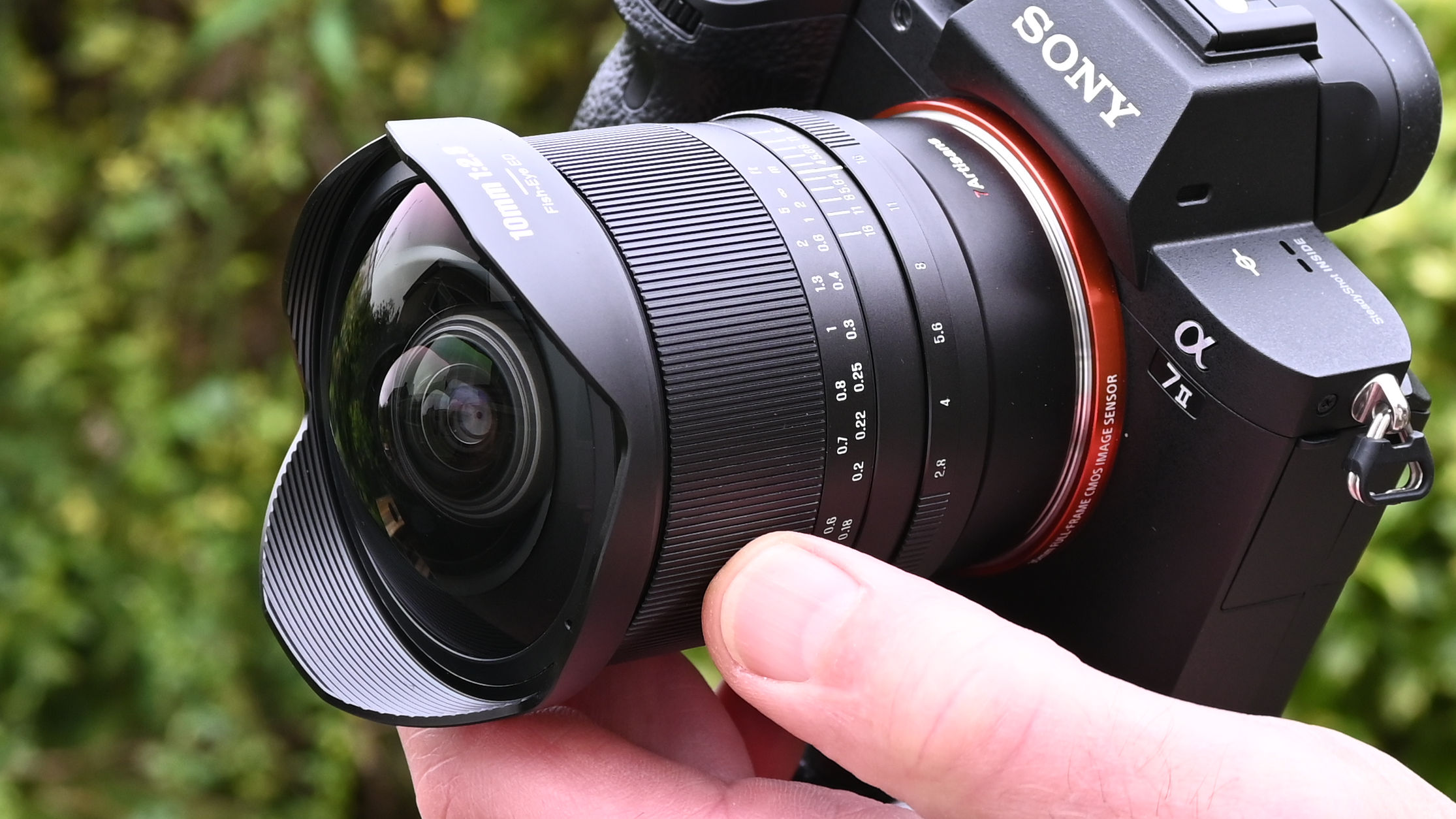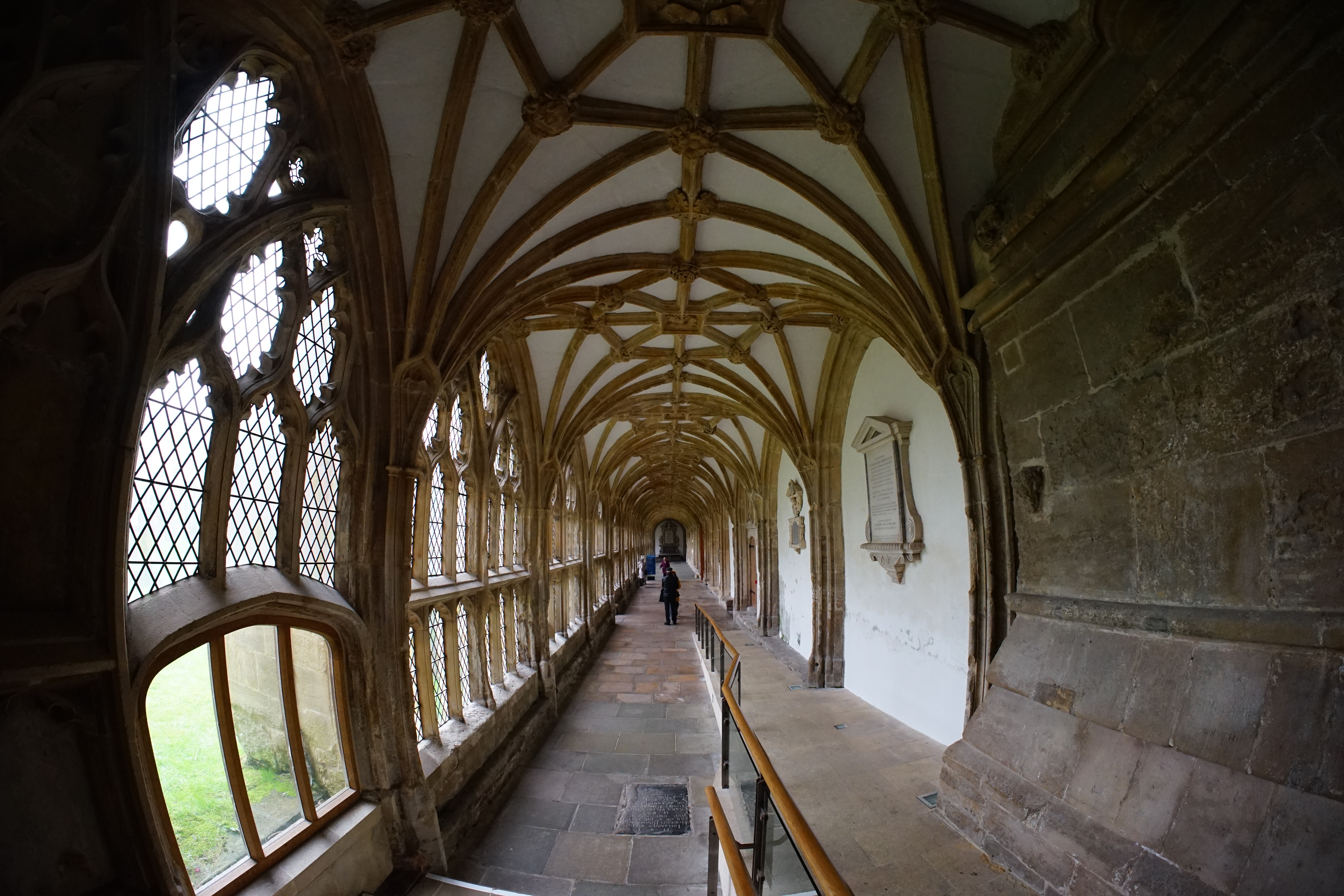
7Artisans has been making lenses since 2015 and, like most of its back catalog, this is a fully manual lens with no built-in electronics. The lack of autofocus isn’t really a problem because, as a fisheye lens, the depth of field is gigantic.
The only real issue is that no lens-based EXIF data is recorded in images. I love the huge viewing angle and funky-looking distortion of fisheye lenses, this one being a ‘diagonal’ rather than ‘circular’ fisheye, so it delivers a frame-filling image on the full-frame cameras for which it’s designed.
A bonus of being a fully manual lens is that it’s available in a wide range of mount options, including Canon RF, Leica L, Nikon Z, and Sony FE. The angle of view measures 185 degrees on the diagonal, beating the 178 degrees of the original 7Artisans 10mm f/2.8 Fish-Eye. All in all, the Mark II aims for a spot in the line-up of the best fisheye lenses on the market.

7Artisans 10mm F2.8 II Fish-Eye ED: Specifications
7Artisans 10mm F2.8 II Fish-Eye ED: Price
Launching at the tail end of 2024, the 7Artisans 10mm F2.8 II Fish-Eye ED came to market with a price tag of $278/£269. That’s pretty much the same as the selling price of the original lens, which makes it far less expensive than most own-brand options from camera manufacturers. That’s the sort of bonus I’d expect from a fully manual lens.
7Artisans 10mm F2.8 II Fish-Eye ED: Design & Handling
As with many fisheye lenses, the 7Artisans packs its mighty 185-degree viewing angle into a remarkably compact and lightweight package, measuring 75x95mm and weighing 602g. That’s despite having a fairly fast f/2.8 aperture rating, which is a bonus for shooting the likes of architectural interiors or taking in the huge expanse of a night sky. New fluorescent markings on the barrel make them easier to read after sundown.

One potential problem with architectural interiors for the likes of museums and cathedrals is that tripods are prohibited. Given the huge viewing angle of this lens, there’s a danger of tripod feet creeping into the image frame anyway.
Being a ‘dumb lens’, the camera doesn’t even know that the lens is attached, let alone its vital statistics. As such, in-body image stabilization isn’t available by default, but you can dial in the focal length in the menus of many cameras, enabling stabilization for handheld shooting. Either way, the very short focal length and ultra-wide viewing angle makes camera-shake less of a problem.

As with the original lens, there are 11 elements in 8 groups but the Mark II swaps out the Hoya ULD (Ultra Low Dispersion) element, replacing it with two ED (Extra-low Dispersion) elements. There’s also one aspherical element. The aperture diaphragm gains two additional blades, taking the count from eight to ten. 10-point sun stars are definitely on the menu.

Build quality is impressive, with a sturdy and nicely finished metal barrel and mounting plate. The same goes for the integral hood that protects the front element, as well as for the slip-on front cap. There are no weather-seals but that’s hardly surprising, given the purchase price.

Fully manual lenses offer a very hands-on experience, and I’m happy to say that the focus and aperture rings work smoothly and precisely, with good tactile feedback. The de-clicked aperture ring requires a satisfying amount of torque for rotation, making it difficult to nudge from its intended setting accidentally. Depth of field markers are on hand, ideal for zone focusing in the tried, trusted and traditional way.
When it comes to the lack of autofocus, I found that I could effectively just set the focus distance to 2m and the depth of field at f/5.6 or narrower apertures would cover everything from really close up to infinity. For anything other than extreme close-ups, it’s therefore pretty much like a focus-free lens.

7Artisans 10mm F2.8 II Fish-Eye ED: Performance
I’ve used plenty of fisheye lenses that are sharp in the central region of the image frame but disappointingly a bit blurry towards the edges, along with pronounced color fringing. The Mark II follows in the footsteps of the original lens by delivering impressive sharpness even out at the edges and corners of the frame, as well as doing an admirable job of minimizing color fringing.

Naturally, barrel distortion is off the scale, but that’s what gives fisheye images their distinctive look and visual impact. It’s also one of the reasons that we don’t run lab tests on fisheye lenses, the other being that we’d need a test chart of architectural proportions.

7Artisans 10mm F2.8 II Fish-Eye ED: Sample Images
The images in the following gallery were taken at Wells Cathedral, in the English county of Somerset, as well as in the surrounding city streets, albeit on a very dull and misty day, somewhat typical for the time of year in the West Country.













7Artisans 10mm F2.8 II Fish-Eye ED: Verdict
I feel that there are definite improvements over the original edition of this lens, the Mark II doubling up on extra-low dispersion elements and having a more well-rounded 10-blade aperture diaphragm, which also happens to produce lovely 10-point sun stars. It’s beautifully built with a sturdy metal construction, the aperture and focus rings work smoothly and precisely, and the image quality is fabulous. I’d go out and buy one right now if I didn’t have the original version as a permanent fixture in my kit bag. Whether or not it’s worth trading in my original lens for a Mark II is a trickier matter. For now, I’ll stick rather than twist.

Should you buy the 7Artisans 10mm F2.8 II Fish-Eye ED?
✅ Buy this...
- You want that classic fisheye look that can make images really stand out from the crowd.
- You’d like a fisheye that’s versatile enough to take on everything from architectural interiors to the night sky above.
🚫 Don't buy this...
- You feel the need for autofocus but, trust me, manual focusing causes no problems with this fisheye lens.
- You’d prefer a ‘circular fisheye’ that gives a full 180-degree viewing angle on the horizontal and vertical, rather than on the diagonal, and produces circular images.







